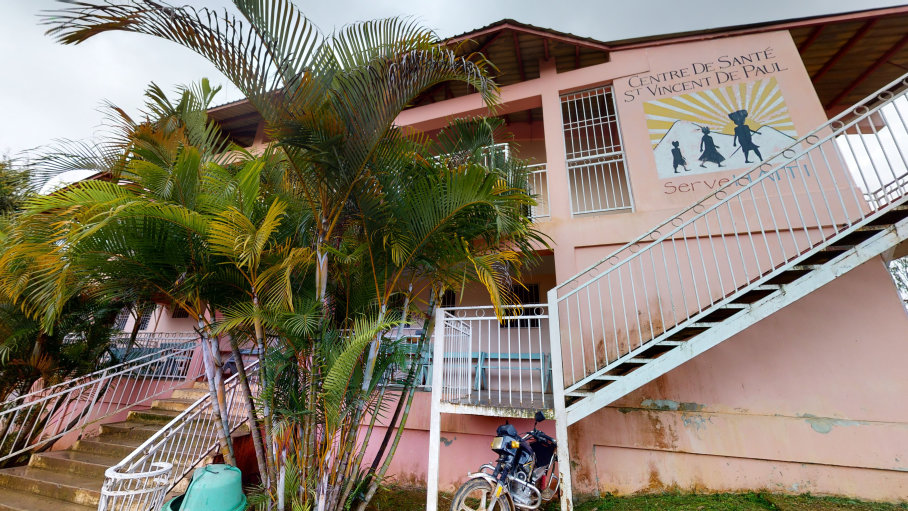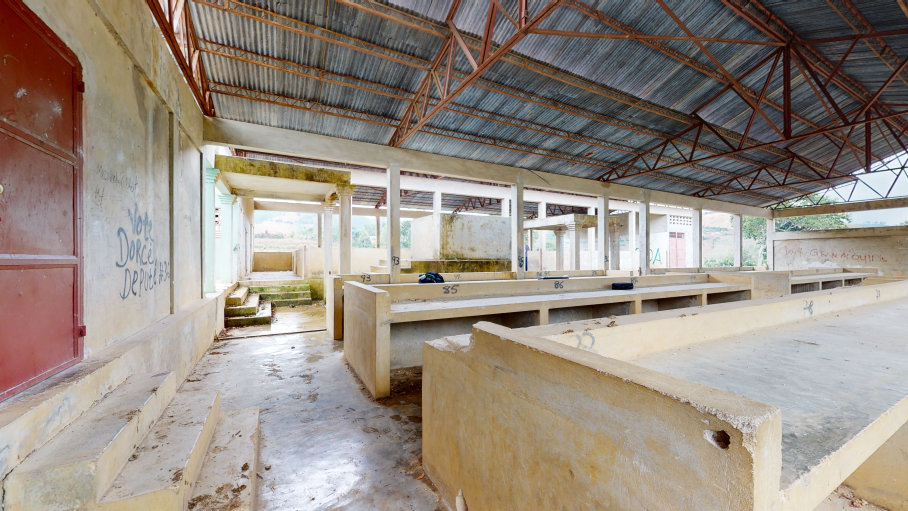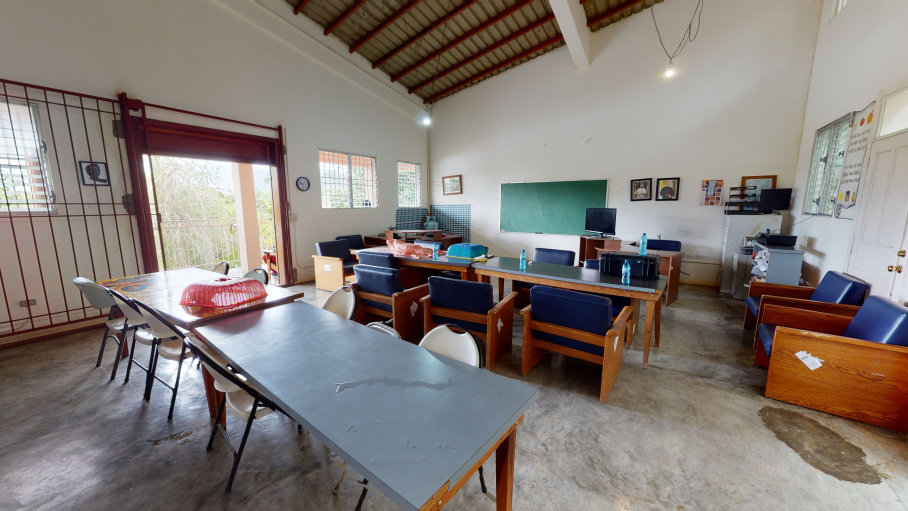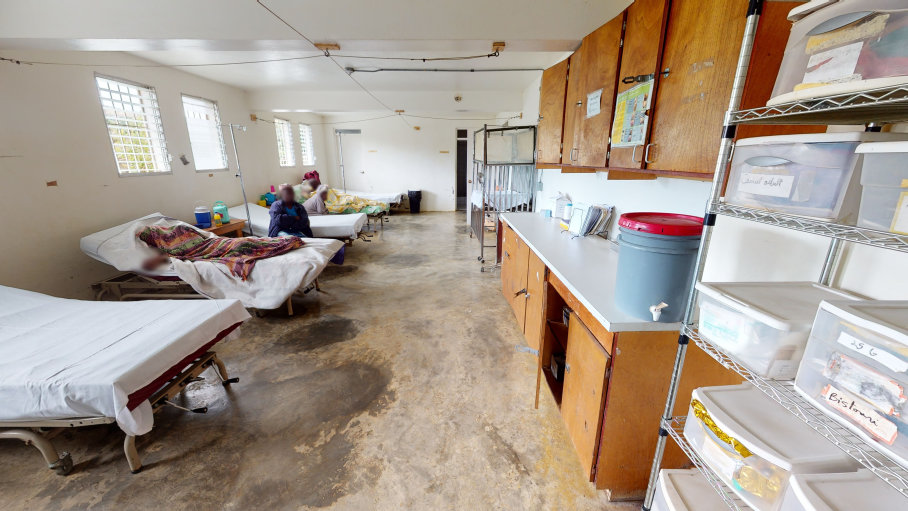Virtually explore one of Haiti’s most essential health centers
Build Health International gives partners an interactive tool to view the physical landscape of global healthcare infrastructure
Sitting high on the side of a steep hill in Grand-bois, Haiti, is the Centre de Sante, St. Vincent de Paul. Located on the far western edge of Haiti, bordering the Dominican Republic, the Centre de Sante was originally built in 2005 in the back of a local church. This health center, supported and managed by the organization ServeHAITI, has grown from its origins in the church to a beacon for the Grand-bois community, which serves more than 16,000 patients annually and employs over 50 Haitian clinical staff.

The critical role that the Centre de Sante plays is underscored by the fact that it’s the sole medical facility in this rural area. When patients need to be referred to another hospital, they often have to travel more than four hours, either into the Dominican Republic or to Haiti’s capital city of Port-Au-Prince.
As the Centre de Sante has developed over the past 15 years, demand for essential medical services has also increased. To meet the growing community need, ServeHAITI purchased an additional building, once intended to be used as a marketplace. To support expansion efforts, Build Health International was brought in to assist in design and construction.

As an architecture and engineering non-profit that designs, builds and equips hospitals in low-resource settings around the world, Build Health International (BHI) has been working in rural, low-income communities like Grand-bois for over a decade. Yet even with this experience, some challenges prove difficult to overcome. While BHI has on-site teams in Haiti and several other countries, the majority of BHI’s design team is based in Massachusetts, and in-country teams are often based far from new project sites.
The necessity of working remotely is further exacerbated by travel restrictions imposed by the COVID-19 pandemic, limiting BHI’s ability for regular site visits. Such restrictions have limited the comprehension of project sites to Google Earth imagery, still photos of specific areas and anecdotal information from those who have visited. Because this approach only provides a glimpse into the scope of the site, it can make critical information — such as elevation changes — unavailable, causing delays and budget overruns in the construction phase of the project.
Looking to gain a more comprehensive understanding of the locations they design and build, BHI began using the Matterport Pro2 camera to scan project sites in March 2021 - and it has been a game-changer for BHI’s design process. The Pro2 camera allows BHI to fully scan buildings and utilize an intuitive online interface that provides remote members of their team access to a full “digital twin” of the facility.

When a small BHI team of three first visited the Centre de Sante in April 2021, they used the Matterport camera to scan both the existing health center and the market where ServeHaiti will expand. Since then, a larger team including architects, structural and systems engineers, medical design specialists and solar energy designers have been able to take a virtual tour, verify measurements remotely, and, in turn, confidently begin concept design and planning.
Thomas Darr, a Project Architect and Site Supervisor for BHI, took the Matterport scans of the ServeHAITI facility. “I used to have to try to explain existing conditions with one slightly too close-up photo and my own descriptions”, shares Darr, “but the Matterport system allows me to share the conditions and context fully with team members, speeding up and enhancing communications, thus letting us focus on the important work of designing the future of the health centers where we work.”
One of those remote team members who’s benefitted from access to Matterport scans is Robert Raymond, a Healthcare Planner and Architect for BHI. Bob shares,
Matterport gives us a detailed window into site conditions and is the next best thing to an actual site visit. In some ways, it is better than a site visit, as I can 'revisit' the Matterport model repeatedly as new questions arise. It's so real I often find myself thinking ‘when I was at the site in Grand Bois, Haiti,’ only to catch myself and realize I've never been to Haiti!”
Beyond the utility that Matterport provides to BHI’s design teams, the platform also benefits BHI’s partner organizations, such as ServeHAITI. While infrastructure is an essential component of strengthening health systems, it’s often difficult to justify with potential funders because it seems less tangible than things like medicine or biomedical equipment. By using the Matterport camera, BHI’s hope is that partner organizations will be able to illustrate the need for healthcare infrastructure, by showing their supporters before — and after — tours of facilities. In this way, Matterport transcends from a technical tool to a social one, providing visibility into the physical landscape of global health infrastructure.

Since its founding, Build Health International has been driven to provide dignified healthcare to communities that need it most by working with partners to build the most sustainable and cost-effective infrastructure possible. By using the Matterport camera, BHI is able to realize this mission more fully than ever before — enabling teams to work more accurately and efficiently while simultaneously enabling partners and their supporters to see the urgent need for healthcare infrastructure firsthand.
This article was adapted from A Walk Through a Haitian Health Clinic — from 1,650 Miles Away.
